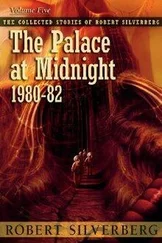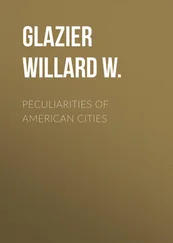Willard Glazier - Ocean to Ocean on Horseback
Здесь есть возможность читать онлайн «Willard Glazier - Ocean to Ocean on Horseback» — ознакомительный отрывок электронной книги совершенно бесплатно, а после прочтения отрывка купить полную версию. В некоторых случаях можно слушать аудио, скачать через торрент в формате fb2 и присутствует краткое содержание. Жанр: foreign_antique, foreign_prose, Путешествия и география, на английском языке. Описание произведения, (предисловие) а так же отзывы посетителей доступны на портале библиотеки ЛибКат.
- Название:Ocean to Ocean on Horseback
- Автор:
- Жанр:
- Год:неизвестен
- ISBN:нет данных
- Рейтинг книги:4 / 5. Голосов: 1
-
Избранное:Добавить в избранное
- Отзывы:
-
Ваша оценка:
- 80
- 1
- 2
- 3
- 4
- 5
Ocean to Ocean on Horseback: краткое содержание, описание и аннотация
Предлагаем к чтению аннотацию, описание, краткое содержание или предисловие (зависит от того, что написал сам автор книги «Ocean to Ocean on Horseback»). Если вы не нашли необходимую информацию о книге — напишите в комментариях, мы постараемся отыскать её.
Ocean to Ocean on Horseback — читать онлайн ознакомительный отрывок
Ниже представлен текст книги, разбитый по страницам. Система сохранения места последней прочитанной страницы, позволяет с удобством читать онлайн бесплатно книгу «Ocean to Ocean on Horseback», без необходимости каждый раз заново искать на чём Вы остановились. Поставьте закладку, и сможете в любой момент перейти на страницу, на которой закончили чтение.
Интервал:
Закладка:
Six hundred and fifty thousand volumes at present constitute the stock of the library – a vast treasure-house of information, instruction and pleasure to which any citizen of Boston can have access by simply registering his name, and which among other valuable special collections includes the Brown musical library of 12,000 volumes and rare autograph manuscripts; the Barton Shaksperian library, one of the finest collections of Shakesperiana extant, valued at $250,000; the Bowditch mathematical library and the splendid Chamberlain collection of autographs, which is worth $60,000 and represents a lifetime of work on the part of the donor. The wonderful pneumatic and electric system of tubes and railways which connects the delivery and stackrooms and keeps this vast collection of books, pamphlets and magazines in circulation, smacks almost of the conjurer's craft. Whatever else must be crowded out of a visit to Boston, the Public Library assuredly should not be passed by.
Trinity Church stands within hailing distance of the Public Library, on Boylston and Clarendon streets – an imposing and beautiful edifice of granite and freestone, built in French Romanesque style, with a tower 211 feet high. Far outside of Boston has the fame of Trinity Church penetrated, owing not to the fact that it is one of the most splendid, costly and fashionable churches in the country, but to its ever-revered and ever-mourned rector, the late Phillips Brooks, Bishop of Massachusetts, whose massive figure will stand out against the horizon for many a year as the most striking speaker and deeply spiritual thinker America has ever known.
From Copley Square, not far from Trinity, rise the spires of the "New Old South" Church, a superb structure in North Italian Gothic style, rich in beautiful stone-work, carvings and stained glass. It was erected at a cost of over half a million of dollars to take the place of the disused "Old South" on Washington street. Another prominent church is the First Church, at Marlborough and Berkeley streets, the lineal descendant of the humble little mud-walled meeting-house which was the first consecrated roof under which the good folk of Boston gathered for divine worship. The congregation of that day could scarce believe their sober Puritan eyes could they behold the $325,000 church which was built in 1868 to continue the succession which had begun with the little mud meeting-house of 1632.
King's Chapel, with its ancient burying-ground, is one of the most famous churches in Boston, having been the chapel of the royal governor, officers of the army and navy, and other official representatives of the "principalities and powers" of the mother country. Massive, almost sombre, in its exterior, and quaint and picturesque within, the old church stands, with few changes, as erected in 1749, with its old-fashioned pulpit and sounding-board, prim, straight pillars, and antique high-backed pews which recall the remark of the little girl, that when she went to church she "went into a cupboard and climbed up on the shelf." Its burying-ground is believed to be the oldest in the city. Christ Church, built in 1723, is the oldest church edifice in the city. Its age-mellowed chime of bells was the first ever brought into this country, and the first American Sunday-school was established there in 1816. To-day its tall steeple, which on the eve of Lexington's conflict bore the signal lanterns of Paul Revere, is the most conspicuous object in the North End, where the old-time aristocrats who worshipped in Christ Church have given place to a poverty-stricken foreign population to whom the church is little and its traditions less. Churches which well deserve more extended mention, could space permit, are the beautiful Gothic Cathedral of the Holy Cross, with its fine organ and splendid high-altar of onyx and marble; Tremont Temple, whose hall is the largest in Boston; and the South Congregational Church, presided over by Rev. Edward Everett Hale, author of "The Man without a Country" and other world-famous literary productions, and originator of the equally famous "Ten Times One" clubs.
Boston's religious history is most interesting, although almost kaleidoscopic in its changes. From being the stronghold of Puritan orthodoxy it has become the headquarters of liberal Unitarianism. King's Chapel is a curious instance; originally an Episcopal church and congregation, it became Unitarian in 1787, retaining the Episcopal liturgy with necessary changes, and now doctrines are preached over the tombs of the dead dignitaries interred beneath the church floor, diametrically opposed to those in which they lived, died and were buried. Though all denominations of course flourish within her walls, Boston is still strongly Congregational in her leanings.
From the churches to the schools is a natural transition. The founders of Boston's greatness placed the two influences side by side in importance, and their wisdom in doing so has had its justification. The current "poking of fun" at the "Boston school-ma'am," her glasses, her learning and her devotion to Browning; and the Boston infant, who converses in polysyllables almost from his birth, has its foundation in the fact, everywhere admitted, that nowhere are intelligence and culture so widely diffused in all ranks of life as in Boston. The free-school system, an experiment which she was the first American city to inaugurate, is considered by educators to lead the world. The city's annual expenditures for her public schools, of which there are over 500, amount to about $2,000,000, and from the kindergarten to the High School, where the pupils can be prepared for college, the youth of the city are carefully watched, trained, instructed, and all that is best in them drawn out. Even in summer, "vacation schools" are held, where the children who would otherwise be running wild in the streets can learn sewing, box-making, cooking and other useful branches.
The English High and Latin School is the largest free public school building in the world, being 423 feet long by 220 feet wide. It is a fine structure in Renaissance style, with every advantage and improvement looking to health and convenience that even the progressive Boston mind could think of. It would be a sluggish soul indeed that would not be thrilled by the sight of the entire school-battalion going through its exercises in the immense drill-room, and realize the hopeful future for this vast army of coming citizens, who are thus early and thus admirably taught the priceless lesson of discipline.
The Boston Normal School, the Girls' High School and the Public Latin School for girls, fully cover the demand for the higher education of women. The latter institution is the fruit of the efforts of the Society for the University Education of Women, and its graduates enter the female colleges with ease. Wellesley, the "College Beautiful," as its students have fondly christened it, is situated close to Boston in the beautiful village of Wellesley, where feminine education is conducted almost on ideal lines. No woman's college in the world has so many students, or so beautiful a home in which to shelter the fair heads, inwardly crammed and running over with knowledge, and outwardly adorned, either in fact or in prospective, with the scholastic cap of learning. Since its opening in 1875, Wellesley has almost created a new era in woman's education, and its curriculum is the same as those of the most advanced male colleges. The College Aid Society, which at an annual cost of from $6000 to $7000 helps ambitious girlhood, for whom straitened means would otherwise render a university education impossible, is an interesting feature of the college.
What Wellesley has for twenty years been to American girlhood, Harvard University has for 150 years been to American young manhood, and though its chief departments are located at Cambridge, it may still be fairly ranked with Bostonian institutions. The tie which connects the Cambridge University and the capital of Massachusetts is closer than that existing between mere neighbors – it is a veritable bond of kinship. It might be said that from the opening of the University in 1638, Boston made Harvard and Harvard Boston. Its illustrious founder, John Harvard, was a resident of Charlestown, now a part of Boston – and his monument, erected by subscriptions of Harvard graduates, is one of the principal "sights" of that district, where it stands near the Old State Prison. To its classic groves Boston has sent, and from them received again, the noblest of her sons; and three of her departments, the Bussey Institution of Agriculture, the Medical School and the Dental School, are situated within the limits of Boston proper. Harvard University at present owns property valued at $6,000,000, and accommodates nearly 2000 pupils. In addition to the departments already mentioned and which are located in Boston, the principal sections are Harvard College, the Jefferson Laboratory, the Lawrence Scientific School, the new Law School, the Divinity School, the Harvard Library, Botanical Gardens, Observatory, Museum of Comparative Zoölogy, Peabody Museum of Archæology and Ethnology, Agassiz Museum, Hemenway Gymnasium and Memorial Hall. To wander through its ancient halls, the oldest of which dates back to 1720, and which have been used by Congress, is to visit the cradle of university education in America.
Читать дальшеИнтервал:
Закладка:
Похожие книги на «Ocean to Ocean on Horseback»
Представляем Вашему вниманию похожие книги на «Ocean to Ocean on Horseback» списком для выбора. Мы отобрали схожую по названию и смыслу литературу в надежде предоставить читателям больше вариантов отыскать новые, интересные, ещё непрочитанные произведения.
Обсуждение, отзывы о книге «Ocean to Ocean on Horseback» и просто собственные мнения читателей. Оставьте ваши комментарии, напишите, что Вы думаете о произведении, его смысле или главных героях. Укажите что конкретно понравилось, а что нет, и почему Вы так считаете.





![Джон Сэндфорд - Ocean Prey [calibre]](/books/384313/dzhon-sendford-ocean-prey-calibre-thumb.webp)






